The Strength to See What Isn’t Yet
Earlier this summer, I copied down a Chinese proverb, though an internet search suggests that this many not actually come to us from China after all! But the words resonate with me regardless: “Keep a green bough in your heart, the singing bird will come.”
(Image source: madebychook.)
Keep a green bough in your heart; the singing bird will come. Or as we heard from Mariame Kaba on Rosh Hashanah, hope is a discipline.
It feels like an apt seasonal teaching as we approach the autumn equinox and the darker months of the year. It feels even more like an apt spiritual teaching, especially in the midst of pandemic, in times when it feels like our certainties are shifting beneath our feet.
Making a space for hope in our hearts is a practice, which is to say, it takes work. We need to till the soil, plant the tree, keep the tree alive, and then the bird will come with exquisite liquid song. Hope doesn’t come because we’re lucky. Hope comes when we make a space for it.
It takes strength — gevurah — to cultivate that space in our hearts, especially when the news makes us want to close our hearts tight against anticipated loss and even against each other. It takes strength to have the vision of the singing bird that isn’t yet here, the hope that we may not yet feel, the healing that isn’t yet.
In this morning’s Torah reading we heard רְאֵ֨ה נָתַ֤תִּי לְפָנֶ֙יךָ֙ הַיּ֔וֹם / “See, I place before you today…” Yom Kippur calls us to see what has not yet come to pass — because our choices will determine which future we enter. We get to choose curses or blessings, hardened hearts or opened ones, despair or hope.
In a sense, the whole of 5782 is an opportunity to pause and see what isn’t here yet.
Torah teaches that every seventh year should be a shmita year: a year-long Shabbat for the land. We’ll learn more about that later this year (so stay tuned for updates on study and action opportunities this winter and spring). As the climate crisis intensifies, how will our choices and our policies and our culture lead us to care for our planet? How can we not only keep a green bough in our hearts, but also preserve and protect the ecosystems of our planet… especially now, when everything feels so broken — when everything is so broken?
Our mystics teach that at the first moment of creation, there was breaking. God’s infinite light was too powerful to be contained. The initial vessels created to hold that light didn’t have enough structural integrity, enough gevurah, and they shattered. So God tried again, and the second time, creation “held”… but shards of those broken first vessels remain. There is brokenness everywhere we look, and that’s not new.
Our mystics also teach that we have an integral role to play in repairing the world’s brokenness. When we do mitzvot, we uncover the hidden sparks of primordial light buried beneath the shards, and we lift them back up to their Source. We repair the world. We repair God, as it were.
I love this teaching for two reasons. First: it doesn’t sugarcoat the brokenness. Things are broken — between global pandemic, and inequality and racism and xenophobia, and the climate crisis, and assaults on civil rights and on our democracy — and our religious tradition is not going to pretend that away.
And second: it empowers us to bring repair. This is our task as Jews and as human beings in the world. We lift up sparks every time donate to the food pantry, or welcome a refugee, or help someone with a uterus get the healthcare they need… and every time we light Shabbat candles or pray or sit in a sukkah, because those mitzvot nourish our souls, and we need that, too.
In the words of the sage Leonard Cohen, “There is a crack in everything: it’s how the light gets in.” We need to see the cracks, the broken places, because pretending them away is spiritually dishonest. And the cracks are also how we see the light shining in. Being able to see both what’s broken, and what repair could look like and how we can get there, takes gevurah.
Some of us don’t like looking at what’s broken. I get that. It’s painful for me too. I struggle most when the brokenness is something human beings created or perpetuate.
What brings me closest to despair is the knowledge that a year ago, we stayed apart to protect each other. There was no vaccine for COVID-19. Today we are vaccinated: honestly miraculous! But because so many people believe the lies — that COVID is a hoax; that masks don’t offer protection, or that they’re a form of government control; that the vaccines aren’t safe, or that they’re a form of government control — the Delta variant is raging. Misinformation and disinformation and outright lies are so prevalent that thousands are once again dying every day. Facing all of that takes gevurah.
Some of us have trouble seeing beyond what’s broken. I get that too. The brokenness is so vast it can seem insurmountable. Facing what’s broken without becoming consumed by that brokenness also takes gevurah.
For me the spiritual question is: what are we afraid of? What are we afraid will happen if we face the brokenness in our communities, in our nation, in our world? And what are we afraid will happen if we allow ourselves to cultivate hope for better?
I suspect we’re afraid of facing injustice because we’re afraid of despair. I feel that. I know that if I let myself see those things clearly, I am going to need to ask: what am I willing to do in order to create change, and what am I willing to give up to make space and time for that work?
And I suspect we’re afraid to let ourselves hope because we don’t want to be disappointed. If hope is something that just happens, without any agency on our part, that fear makes some sense — hopes can rise and hopes can be dashed and either way it’s not up to us. But in Mariame Kaba’s framing, hope is a discipline. Which brings me back to our mystics and their teaching that when we do mitzvot, we lift up fallen sparks. Doing mitzvot also is a discipline, a practice. Jewish tradition calls us to do mitzvot, recognizing that in the doing we might rewire our souls and even heal God. And even if we don’t feel changed, doing mitzvot still makes the world a better place.
See, I place before you today blessing and curse, says Torah. The Hasidic master known as the Me’or Eynayim points out that good and evil have been mixed together since the beginning of our human story, and they are mixed together within us, too. Our task, he says, is to empower our innate goodness. I think he means something like: our morality, our integrity, our attachment to truth. Translator R. Art Green notes that our moral disposition affects how we see the world, especially the actions of others. A tzaddik (a righteous person) is someone whose own goodness causes them to see the good in others, and therefore to treat others with compassion.
It takes gevurah to see the best in others, not just one time but as a constant practice. If someone stands me up for a meeting, I could think, “ugh, they don’t value my time, I don’t want to engage with them,” or I could choose to think, “Hm, I wonder what’s going on with them; I should check in and make sure they’re okay.” Halakha (Jewish law, our tradition’s sacred path) asks us to do the second of these: to give each other the benefit of the doubt. Seeing each other through generous eyes takes gevurah! And…how we see each other can impact what actually is.
There are a few people in the world I wouldn’t want to sit down with until they did their work, repaired their harms, and showed themselves to have changed. But in most cases, we’re what Hasidic tradition calls beynonim — in-between-ers. We’re not perfect, and we’re not terrible: we’re somewhere in between. It’s in that in-between space that I think we can make the greatest difference by giving each other the benefit of the doubt, seeing each other through generous eyes. This isn’t a Pollyanna move. It asks a spine of titanium alongside an open, curious heart.
It takes gevurah to build relationships when we disagree, identifying common ground while holding the reality of our differences. It takes gevurah to balance generosity of spirit with holding each other (and ourselves) accountable. It takes gevurah to discern when we should “grade on a curve” and when we should demand better from others and ourselves. It takes gevurah to see each other, and the world, into being better than we have been before.
Mariame Kaba asks, “what’s the next best thing you can do from where you are?” Not “how are we going to fix everything,” but what is the next good thing we can do from where we are.
Envision a better world, and take one step closer. And then another. As our sages teach, “It is not incumbent on us to finish the task, but neither are we free to refrain from beginning it.”
It’s tempting to imagine that if we could just feel hopeful, then we’d be energized to repair the world. But I think that’s backwards. Our job is to see what hasn’t yet come to pass — the good that isn’t here yet — and then live it into being. We lift up the sparks, we look for the good in each other, we envision a better world and take one step closer to it, because those actions are how we cultivate the ground of our hearts to sustain the green bough where hope can make its home.
This is the sermon Rabbi Rachel offered at CBI on Yom Kippur morning (cross-posted to Velveteen Rabbi.)






